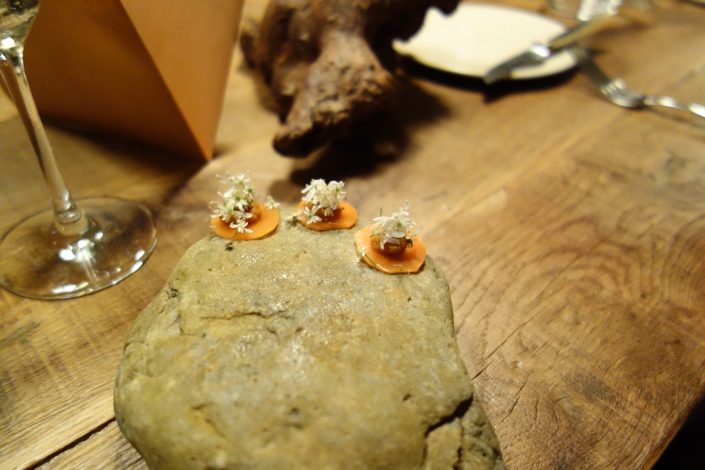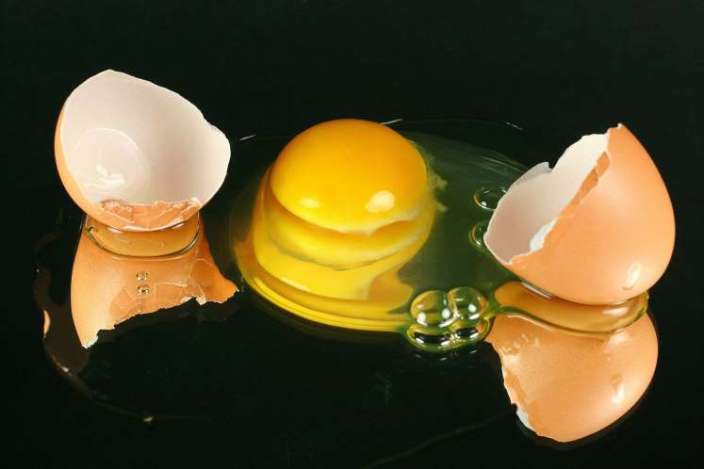An Early Bronze age lunch
 The little oil lamp flickers and shadows dance on the loam walls and the tatched roof while the woman with the coarse features laborously grinds with a stone a handful of grains of barley into flour. Then from the outside there is the sound of splashing and someone calling out as a dugout comes in from the lake, the man triumphantly holding up a giant pike pierced on his bone harpoon yes that is how it could have been. Such are the impressions of life in prehistoric times given by the Pile dwelling museum at lake Constance (Germany and Switzerland)
The little oil lamp flickers and shadows dance on the loam walls and the tatched roof while the woman with the coarse features laborously grinds with a stone a handful of grains of barley into flour. Then from the outside there is the sound of splashing and someone calling out as a dugout comes in from the lake, the man triumphantly holding up a giant pike pierced on his bone harpoon yes that is how it could have been. Such are the impressions of life in prehistoric times given by the Pile dwelling museum at lake Constance (Germany and Switzerland)
Hans Reinerth an expert on early history from Tübingen, had the idea for the Uhldingen museum in the 1920s and found support from the mayor, Georg Sulger. The first pile dwellings were built in 1922, roughly as the Swiss archaelogist Ferdinand Keller had sketched the life of our ancestors from 1854. Today there are three village settlements with a total of 20 houses from the New Stone Age, ca. 4000 BC and from the Early Bronze Age, 1100 BC and Late Bronze Age, 973-966 BC standing on pile supported platforms in the lake and fitted out with replicas of old weapons, tools, clays ovens. Old cultivated plants such as spelt wheat and emmer grow in the garden area, and figures of people and animals liven up the scene. Visitors can see how pieces of jewellry were made or pots shaped and are allowed to bake bread, sharpen arrowheads, paddle around in dugout-it is all hands-on archeology. The palisade fence in the water surrounding the small port is, admittedly, not considered to be strictly correct historically, as the pile dwellings were probably built on the marshy bank. But because the level of the lake had risen somewhat, the remains were discovered in the water. The original findings from the excavations-there is said to have been about 100 settlements around the lake-are in the museum on the mainland. However Uhldingen (7880 inhs.) is also well known for the scrap regatta at the conclusion of the port festival at which imaginative contraptions looking as primitive as possible cover a route of 400 metres around the port entrance unless they go under with a gurgle before makig it. And as is fitting for a markedly environmental specialities are made exclusively of local ingredients, which the local restaurateurs offer on a regional menu.
Eggs cooked on hot stone
Bird eggs have been valuable foodstuffs since prehistory. Raymond Oliver (1909-1990),- who was a French chef and owner for more than 35 years of Le Grand Vefour (dated back to 1784) in Paris, France, author of 30 books on food, and was also the owner of a gastronomic library of 3,000 volumes dating back to the 16th century-so in his life-time he tried to reconstruct what was eaten by the caveman in the prehistoric time. He came into the conlusion that one of his favorite dish could be the stone-baked bird egg with roasted peanut-hazelnut. So he tried and succeeded in frying eggs on flat stone (in summer we can try to fry egg on the hood of the car because metal conducts heat better and gets hotter, so people actually have been able to cook an egg on a car hood’s surface)
His recipe: we need 6 eggs (about 400 grams), hazelnut (hulled) and 1/4 tbsp of sea salt
Instructions: Heat a flat stone until it is sufficiently hot. First, place the hulled hazelnut to hot stone. Flavour it with sea salt. Then when it start to roast break the eggs and drop to the stone. Let them cooked for about 15 minutes.

